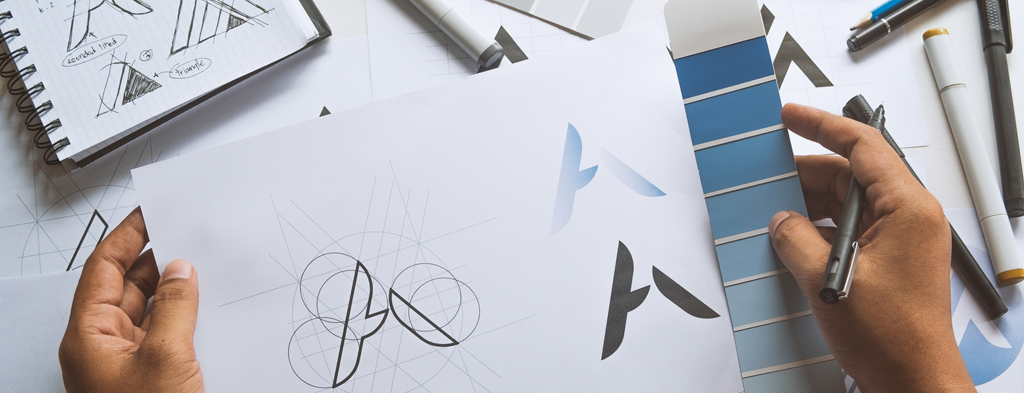Rebranding isn’t something for your Marketing team to do over a few weeks before the end of the year. It requires both high-level planning and tactical attention to detail. However, introducing a new brand to the world can be a lot of fun. After all, rebranding provides a rare opportunity to create a fresh visual identity that fully embodies everything your new brand stands for. And when you have a blank slate in front of you with endless possibilities to explore, it can be thrilling to devote significant amounts of time and attention to finalizing the perfect design.
It’s important to remember that your design is just one part of the rebranding equation. Yes, a compelling visual identity communicates your brand promise through graphics, colors, typography, messaging, and more. But implementation is what brings it all to life. And if you want to roll out your new brand across your entire organization in a timely and cost-effective manner, you can’t afford to create your design in a vacuum.
To achieve a successful outcome, it’s crucial for you to begin thinking about how you will implement your new visual identity before you finalize what it looks like. Here’s how.
Consider how well your digital design will perform in a variety of real-world environments
Have you ever noticed that digital photos can look absolutely beautiful on your phone or computer, only to lose their luster once they’re printed? If you’re not careful, the same thing can happen to your brand’s visual identity.
That’s because most designs are created for an ideal digital environment, where color gradients are exactly right and the screen’s lighting provides an unblemished backdrop for each nuance. And if your brand will live primarily within digital spaces, that’s ok.
If you don’t consider how each design choice will look when translated to the real world, your stunning creation could fall flat.
But how will that same logo look on signs in a variety of shapes and sizes? How well will you be able to see it at night? Will it look as crisp and detailed if you scale it to fit the side of a building or at the reception area? Will the font be readable when shrunk down to fit within the size constraints of a business card? Are thin lines or other creative shapes easily replicated in 3D?
If you don’t consider how each design choice will look when translated to the real world, your stunning creation could fall flat.
A tale of two signs
We recently worked with a client who was looking to highlight a new logo that featured a gorgeous purple and black design. When it came time to replace their existing signage and prototype the new logo, we encountered an unforeseen challenge. The visual elements that looked stunning in daylight essentially disappeared at night. Thankfully, our brand implementation experts were able to solve this problem with creative illumination.
Another salient example also involved signage. This brand’s design involved applying a unique glossy treatment that gave it a truly state-of-the-art look. But when we prototyped it, we discovered the special treatment didn’t hold up in all weather conditions. Not only that, the process to create the treatment was complicated and expensive to build at scale. To make the design feasible, the client agreed to variations and modifications that achieved an outcome that was very close to the original vision.
Each of these clients engaged BrandActive as an implementation partner very soon after finalizing their design. As such, we were able to solve these challenges before they became actual problems in the physical world. But these experiences should serve as a cautionary tale about the importance of marrying design to implementation early on.
Ensure you can consistently apply the design across all your branded assets
Once you translate your ideal design to a real-world environment, you will also face the challenge of consistently applying it across hundreds — if not thousands — of branded assets.
This is the perfect opportunity to level up your organization’s commitment to brand consistency and ensure your stakeholders, vendors, and agency partners can accurately reproduce your brand in every place it will appear. A smart way to achieve a truly consistent brand experience is to gather comprehensive data about all the branded assets you’ll need to convert and use that data to inform your design choices. This also allows you to accurately predict your timeline and rationalize your projected spend.
To get started, think through whether your design can be accurately replicated areas across four example areas.
Branded apparel
Your employees are the ambassadors of your brand — the living, breathing embodiment of everything your brand stands for. You don’t want one employee’s or work group’s branded attire to look different from another’s. Your design choices impact your ability to deliver a uniform look and feel across every piece of workwear. For example, it’s nearly impossible to embroider a gradient logo consistently. Patches can also vary in appearance. Keep these factors in mind and consider developing a simplified version of your design for branded apparel.
ID badges
It can come as a surprise to clients that their beautiful new design looks totally different on an ID badge. This is because the machines used to print IDs often have limited color palettes and resolution capabilities. It’s smart to consider these limitations early on and come up with modifications that deliver a more consistent experience.
Fleet vehicles
Fleet vehicles come in a variety of shapes and sizes and sometimes require special weather-proof applications and treatments. So when it’s time to apply your new design to these large-scale branded assets, you’ll need to think through how your design choices will hold up. This will require considering dimensions and application specifications before working closely with your vendors to ensure a consistent final result.
Global locations
If you’re a global company, it’s also important to consider your design choices through the lens of each of your location’s unique cultures. What might work well in the United States could flop in another country. Additionally, some markets have additional regulations and requirements for signage, fleet vehicles, and other assets that impact implementation timelines and budgets.
Rebranding checklist | Over 120 branded touchpoints
Is your company in the midst of a rebrand or planning for one? Our free rebranding checklist is a great way to start to scope what is involved with a initiative like this.
Factor in the implementation costs and timing implications of your design choices
There are two common questions we hear when we work with clients to implement a rebrand. How much will this cost? And how long will this take? The answer to these questions vary, but understanding the ramifications of your design choices can help you build (and gain approval for) a realistic budget and timeline.
For example, let’s say you’re considering replacing your current reception signage with the new brand design. If you’re on a limited budget, the most cost-effective option might be to design the new logo onto a panel, rather than as letterset, so that any wall damage from removing previous signage can be hidden without the having to fixing the wall.
Or perhaps you are a healthcare system and have the opportunity to showcase your newly branded fleet as part of a big bang launch event. Fleet application can be a lengthy process and the vehicles will be out of commission for the duration of removing the old logos and applying the new ones. Consider staggering your timeline and prioritizing a small number of vehicles that need to have the new brand ready for your launch.
By factoring in these considerations before you finalize your design — or as early in the implementation process as possible — you can increase your chances of staying on time and within budget.
Engage an implementation partner early in the design process
It can be challenging to temper your enthusiasm for your beautiful design concept with the practical realities of implementation. That’s especially true if you’ve never been through a rebrand before and you’re not sure what to expect. By bringing an implementation partner to the table early in the design process, you can make informed decisions that lead to a better result.
BrandActive has the expertise to help you think through every detail that will bring your brand’s new visual identity to life. So if you’re ready to marry implementation to design and achieve the “happily ever after” your rebrand deserves, just reach out. We’d love to help.


